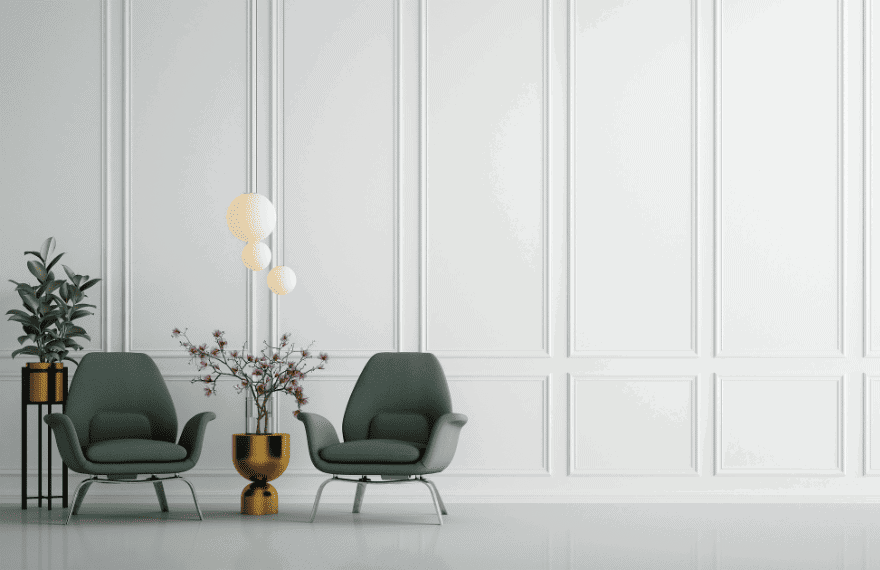Looking to start an interior design blog but not sure what to focus on?
Specializing in a niche can set you apart in a crowded online space. A micro niche allows you to hone in on specific topics and cater to a more targeted audience, helping you become an authority in your chosen area.
In this guide, we’ll explore 30+ unique interior design niches that you can delve into, complete with potential topics for each.
Whether you’re passionate about sustainable design, love historical interiors, or want to focus on small spaces, there’s a niche that’s perfect for you.
Interior design niches
Minimalist design
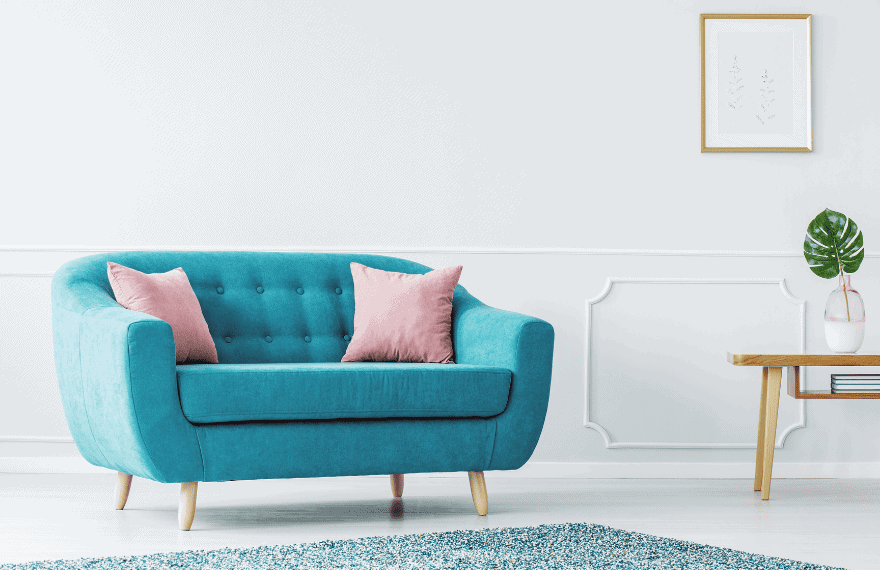
The art of minimalism prides itself on simplicity and function. White spaces, neutral colors, and simple lines often define this design style. The furnishings are pared down to only what is essential.
Many argue that minimalism isn’t just a design aesthetic; it’s a lifestyle. The design choices, then, can extend to one’s emotional and mental well-being.
By removing clutter, many believe that they also clear their minds.
Possible topics:
- The psychology of minimalist spaces
- How to declutter room by room
- Minimalist furniture reviews
- Case studies on minimalist homes
- Sustainable practices in minimalism
Maximalist design
Maximalism celebrates abundance. It is lavish, rich, and sometimes even chaotic. Bright, vibrant colors adorn the walls, and patterns clash delightfully.
This isn’t just a revolt against minimalism but a stand-alone style. It allows for the celebration of individuality and complexity, and it can be deeply influenced by culture and history.
Possible topics:
- The history of maximalism
- How to effectively mix patterns and textures
- Culture’s influence on maximalist design
- Interviews with maximalist designers
- The science behind color choices in maximalist settings
Sustainable interior design
Green living and sustainable design go beyond trends. Renewable materials like bamboo and hemp take center stage in this design philosophy. Add to that furniture made from recycled or upcycled items, and you have a sustainable haven.
Another crucial aspect of this niche is energy efficiency. This often extends to energy-efficient appliances and, sometimes, even renewable energy sources like solar panels.
Blog post ideas:
- Top renewable materials for home design
- A guide to energy-efficient appliances
- How to source sustainable furniture locally
- Low-VOC paints and their benefits
- Designing a home with solar energy
Scandinavian design
Scandinavian design hails from Nordic countries. It masterfully blends form and function, often integrating natural materials like wood and stone.
Light is another key element, whether it’s natural sunlight or softly diffused through modern lighting.
Besides furniture and material choices, the philosophy behind Scandinavian design can be a rich topic. The focus on hygge, or the Danish and Norwegian word for a mood of coziness, could be explored.
Content ideas:
- The history and philosophy of Scandinavian design
- How to achieve hygge through interior design
- Scandinavian lighting 101
- A guide to Scandinavian furniture brands
- The importance of natural elements in Nordic design
Kid-friendly interiors
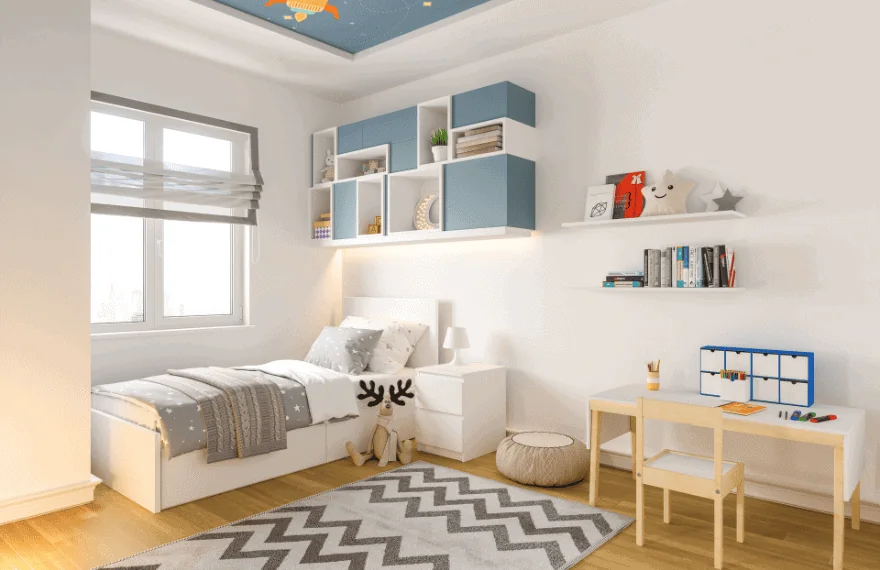
Designing interiors with children in mind presents its own set of challenges and opportunities. Durability, safety, and practicality are as important as aesthetics.
Kid-friendly interiors often feature easy-to-clean materials, rounded corners, and plenty of storage for toys and books.
This niche goes beyond mere decoration; it also touches on child psychology and development. A well-designed child’s room can stimulate learning, imagination, and a sense of security.
For an in-depth look into kid-friendly interiors, consider discussing:
- Designing for different age groups: Toddlers vs. teens
- Psychological benefits of a well-designed kid’s room
- Safety tips for childproofing your home
- Storage solutions for kids’ rooms
- Incorporating educational elements into the design
Industrial design
Think urban lofts, think industrial design. With its roots in warehouses and factories, this style has a more rugged appeal. Exposed pipes and ducts, metal accents, and raw finishes are common.
Yet, industrial design isn’t all rough and gritty. It often incorporates softer elements like plush rugs or cozy throws to balance the hard edges.
- Industrial design: history and evolution
- How to soften industrial spaces with textiles
- The role of metal and wood in industrial design
- Incorporating vintage elements in an industrial setting
- Balancing functionality and style in industrial design
Farmhouse design
Farmhouse design evokes a sense of warmth, coziness, and nostalgia. It’s often characterized by rustic elements like reclaimed wood, neutral and earthy color palettes, and antiques that tell a story.
Traditional and comforting, this style often integrates family heirlooms or vintage pieces that have sentimental value.
While some see farmhouse design as old-fashioned, others find it to be a timeless style that celebrates tradition and simplicity. Many modern farmhouse designs add a contemporary twist to this classic style, incorporating more modern materials and design elements.
Here are some ideas you could delve into when covering farmhouse design:
- How to pick the perfect antique for a farmhouse space
- The evolution of farmhouse design
- DIY farmhouse decor projects
- The best color palettes for a farmhouse interior
- Modern twists in traditional farmhouse design
Mid-century modern design
With roots in the 1950s and 60s, Mid-century modern design boasts clean lines, organic forms, and high functionality. It’s as relevant today as it was in the 20th century, possibly due to its fusion of comfort and style. The use of varied materials like plastic, plywood, and aluminum is common.
What sets Mid-Century Modern apart is its dedication to the exploration of new materials and technologies. It was a product of its time but has remained timeless due to its adaptability and relevance.
When writing about Mid-Century Modern design, the opportunities for exploration are endless. Consider the following topics:
- The history and cultural impact of Mid-Century Modern design
- Iconic Mid-Century furniture pieces and their creators
- How to integrate Mid-Century Modern elements into a contemporary setting
- Mid-Century Modern and sustainability
- Mixing vintage and new in a Mid-Century Modern setting
Coastal design
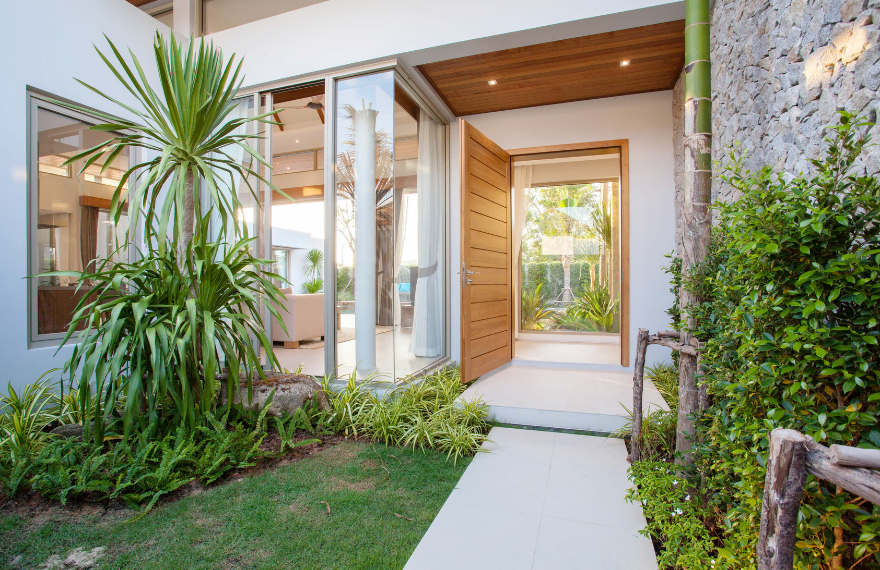
Coastal design isn’t just for beach houses anymore. This design style, characterized by its light, airy ambiance, and ocean-inspired color palettes, has found its way into homes far from the shore.
Natural textures like jute, seagrass, and driftwood often appear in coastal interiors, along with nautical motifs.
Though it’s tempting to go overboard with beachy elements, the key to mastering coastal design lies in subtlety. It’s more about evoking the feel of the beach rather than directly mimicking it.
Navigate the sea of possibilities in blogging about coastal design by diving into these topics:
- Achieving coastal design without overdoing it
- The color psychology of coastal design
- How to select natural materials for a coastal home
- The difference between coastal and nautical design
- Balancing luxury and simplicity in coastal interiors
Bohemian design
Bohemian design is as eclectic as it sounds, drawing inspiration from various cultures and eras. Rich patterns, vibrant colors, and a plethora of textures define this free-spirited style.
Often, bohemian rooms look like a curated collection of unusual and artistic elements.
Bohemian style allows for a lot of personal expression. This isn’t a style defined by stringent rules but by individual tastes, making it a goldmine of creative exploration.
Unearth a wealth of topics in the realm of bohemian design by considering these ideas:
- The psychology behind the eclectic bohemian style
- Incorporating vintage and antique pieces in bohemian interiors
- The role of textiles in bohemian design
- Bohemian design on a budget
- How to blend bohemian elements with other design styles
Traditional design
Traditional design is often considered classic, timeless, and even a bit formal. It tends to feature dark, rich colors, intricate patterns, and plenty of layering. Plush furnishings, elegant accents, and fine details are the norms.
It’s a style that has stood the test of time for a reason. Yet it can be adapted and modernized, often being fused with more contemporary elements to create a transitional style.
Delve into the layers of traditional design with topics such as:
- The key elements that define traditional design
- How to modernize traditional spaces
- The role of symmetry in traditional interiors
- The history and evolution of traditional design
- Mixing traditional and contemporary: the rise of the transitional style
Japanese Zen design
The Japanese Zen design focuses on tranquility, simplicity, and the essence of living in the moment. Spaces in this design niche often feature minimal furniture, earthy tones, and elements that evoke nature like bonsai trees or water fountains.
The philosophy behind Japanese Zen design is as intriguing as the design itself. It often relates to the broader concepts of mindfulness and spiritual balance, offering a meditative retreat within the home.
When it comes to writing about Japanese Zen design, the subject matter is as tranquil as it is deep. Topics to consider could include:
- The philosophy behind Japanese Zen in interior design
- Minimalism vs. Zen: Similarities and differences
- Incorporating natural elements in a Zen space
- How to create a Zen meditation room
- The impact of Zen Interiors on mental well-being
Art Deco design
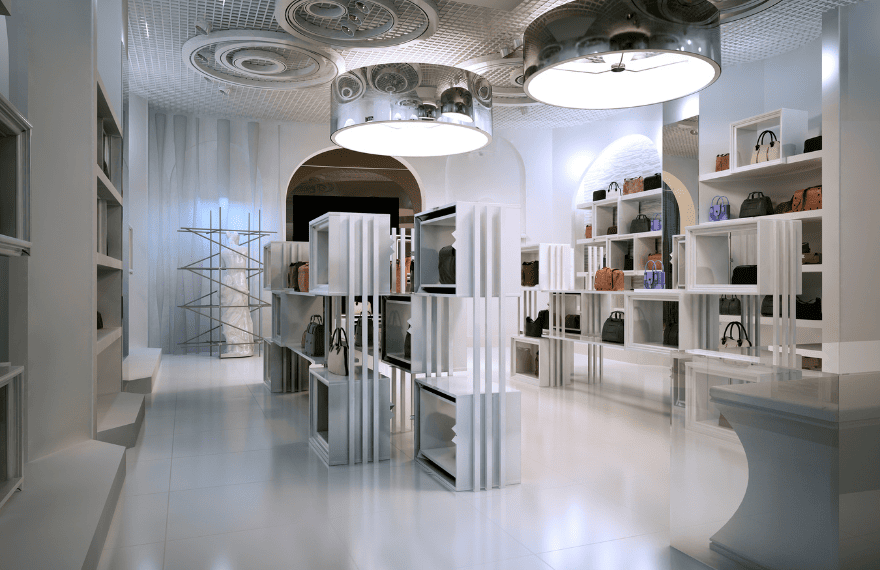
Art Deco emerged in the 1920s and 30s, and it still stands as a significant milestone in the history of design. Defined by opulence, geometrical shapes, and high-contrast color schemes, this style screams luxury and flamboyance.
Art Deco can be eclectic, incorporating elements from different cultures and time periods. The influence of technological advancements of its time, like radio and aviation, can also be found in its design elements.
When blogging about Art Deco, you’ll find a wealth of historical and aesthetic topics to explore. For instance:
- The historical and cultural influences on Art Deco
- Reviving Art Deco in contemporary settings
- Art Deco and the influence of technology
- How to blend Art Deco with modern minimalist elements
- Iconic Art Deco buildings and their interior design
Rustic design
Rooted in natural elements and materials, the rustic design brings the wilderness indoors. The focus is on rough textures, unpolished surfaces, and a strong connection with earthy elements. Rustic design often features wood beams, stone accents, and handmade items.
Rustic doesn’t necessarily mean outdated. Many modern rustic designs combine contemporary conveniences with rustic elements, creating a comfortable and functional living space.
Topics in this niche can vary from the practical to the theoretical, such as:
- The principles of rustic design
- How to incorporate modern amenities in rustic settings
- The best materials for a rustic interior
- The psychology of rustic spaces and their comforting appeal
- Rustic design in urban settings: An oxymoron or a trend?
Gothic design
Gothic interior design is often characterized by dark colors, intricate patterns, and heavy, ornate furniture. It can sometimes evoke a sense of drama or even the macabre, borrowing elements from Gothic architecture like pointed arches and heavy wooden doors.
Though often associated with a more ‘dark’ or ‘moody’ aesthetic, Gothic design can also be incredibly sophisticated, blending well with more modern or eclectic styles when done correctly.
For those looking to venture into the dramatic world of Gothic design, the topics can be quite engrossing:
- The history and evolution of Gothic design
- Gothic vs. Neo-Gothic: What’s the difference?
- How to blend Gothic elements in modern homes
- The color psychology of Gothic interiors
- Iconic Gothic spaces around the world
Southwestern design
Drawing inspiration from the American Southwest, this design style incorporates Native American and Spanish influences. Expect to see lots of earthy colors, woven textiles, and terracotta elements.
Southwestern design is deeply tied to the cultures and landscapes from which it originates. It often includes local materials and artisanal crafts, making it a unique, region-specific style.
To explore Southwestern design in your blog, here are some captivating topics:
- The cultural roots of Southwestern design
- How to incorporate Southwestern textiles in your home
- The role of local materials in authentic Southwestern interiors
- Balancing modern design with Southwestern elements
- DIY Southwestern decor projects for beginners
Tropical design
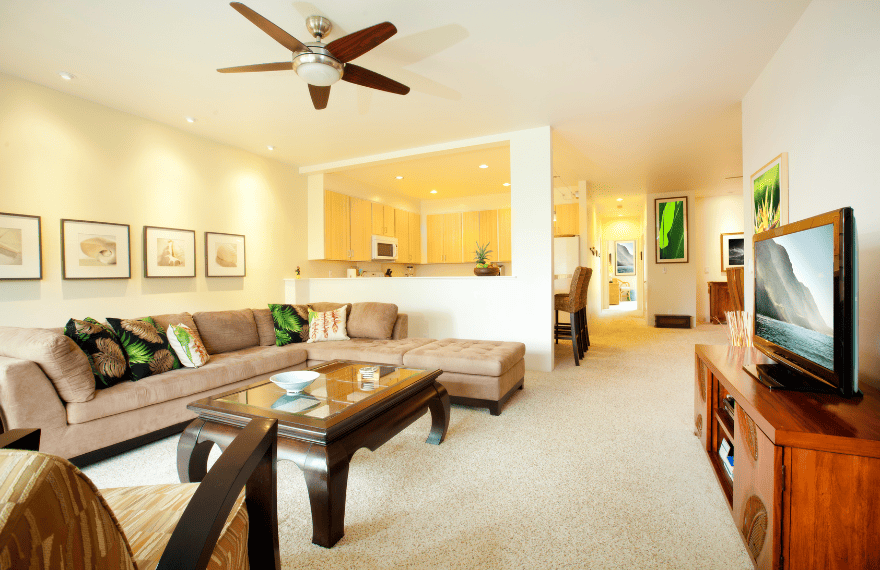
Tropical design conjures images of beach resorts and lush landscapes. It typically uses vibrant colors, exotic woods, and palm leaf motifs to create an atmosphere of relaxed luxury.
Not limited to homes in actual tropical locations, this design style can be effectively recreated anywhere to offer an escape from daily life. Modern tropical design even incorporates minimalistic elements for a fresh, uncluttered look.
For those wishing to bring a slice of paradise into their homes through blogging, consider these topics:
- The history of tropical design and its evolution
- How to achieve a tropical look in non-tropical climates
- The role of plants in tropical interiors
- Combining minimalism with tropical elements
- Incorporating sustainable practices in tropical design
Moroccan design
Moroccan design is all about intricate patterns, vivid colors, and rich textures. Originating from North Africa, this style often features elaborate mosaics, carved wood, and plush, colorful textiles.
This is a style deeply influenced by various cultures, including Arab, French, and Spanish, making it a melting pot of design elements. It’s particularly appealing to those who are drawn to bohemian or exotic aesthetics.
To share the richness of Moroccan design on your blog, these topics can be a great start:
- The cultural influences on Moroccan design
- How to add a Moroccan flair to your living space
- The intricacies of Moroccan tile work
- Moroccan design in small spaces
- Balancing vibrancy and tranquility in Moroccan interiors
Vintage design
Vintage design aims to transport you to another era. It incorporates pieces that are at least 20-30 years old, if not more, creating an atmosphere that’s both nostalgic and stylish.
The key to a successful vintage design lies in the balance between the old and the new. Too many vintage pieces can make a room look dated rather than chic.
Topics that resonate in the vintage design sphere could include:
- How to identify and source authentic vintage pieces
- The art of mixing vintage with contemporary design
- Popular eras for vintage design and how to recreate them
- Restoring and repurposing vintage finds
- Vintage design on a budget: How to get the look for less
Shabby chic design
Shabby chic is a design style that emphasizes vintage elements to create a distressed but elegant look. It often features soft pastels, whitewashed furniture, and floral or paisley patterns.
This design style rose to popularity in the ’80s and has seen resurgences at various points in time. One of its standout features is its adaptability; it can easily be merged with other design trends to create a unique look.
If you’re keen to explore the world of shabby chic, here are some inspiring topics:
- The origins and evolution of shabby chic
- DIY shabby chic projects for every room
- How to blend shabby chic with modern elements
- The psychology behind the shabby chic aesthetic
- Creating a shabby chic look on a tight budget
Pet-friendly design
Pet owners often find that their furry friends greatly influence their home choices. From pet-friendly furniture to scratch-resistant floors, designing a home that accommodates pets is a growing trend.
The pet-friendly design doesn’t mean compromising on style. Many contemporary homes incorporate sleek, pet-friendly features that please both human and animal occupants.
Unleash your creativity with these blog topic ideas:
- The best pet-friendly materials for your home
- DIY pet furniture that complements your decor
- Balancing aesthetics and pet-friendliness
- Tech gadgets for a pet-friendly home
- Design tips for small homes with pets
Adaptive and accessible design
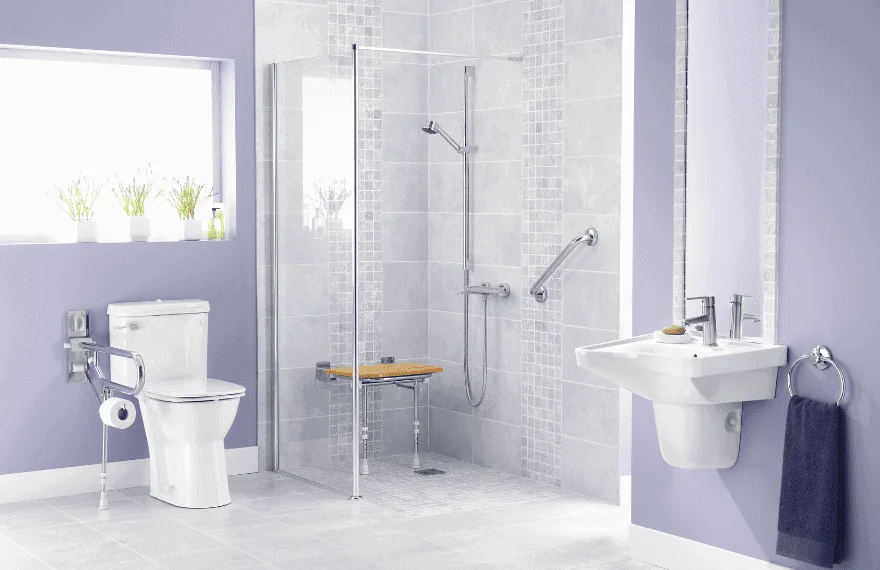
Adaptive design focuses on creating spaces that are accessible to people with physical disabilities. It’s not just about compliance with regulations but also about making a space comfortable and convenient for everyone.
In this niche, you’ll often find yourself diving into topics that are both technical and empathetic, discussing mobility issues, visibility concerns, and ergonomic design.
If you’re focusing on adaptive and accessible design, you could consider topics like:
- Incorporating universal design principles in homes
- Technologies that make life easier for people with disabilities
- Case studies: Well-designed adaptive spaces
- How to retrofit an existing space for accessibility
- The role of smart tech in accessible design
Sustainable and eco-friendly design
As climate change continues to be a pressing issue, sustainable design is more relevant than ever. This approach considers the environmental impact of materials and construction methods, aiming for durability and energy efficiency.
But sustainable design isn’t just about being green; it’s also about creating healthier living spaces that improve well-being.
You could explore a green world of topics such as:
- The best sustainable materials for home construction
- Energy-efficient design tips
- How to achieve a zero-waste home
- Incorporating solar panels into your design
- The relationship between sustainable design and well-being
Small spaces and tiny homes
The tiny house movement and the growing need for affordable housing have made compact living a hot topic in interior design. Effective use of space is crucial, and multifunctional furniture often takes center stage.
Compact living challenges conventional design in intriguing ways, questioning how much space we really need to live comfortably and efficiently.
Potential topics to delve into include:
- The psychology of living in small spaces
- How to choose multifunctional furniture
- Space-saving hacks for tiny homes
- The tiny house movement: A fad or the future?
- Zoning laws and regulations around tiny homes
Office spaces and work-from-home setups
The work-from-home trend, accelerated by the COVID-19 pandemic, has made the home office an integral part of many households. Ergonomics, productivity, and aesthetics are key factors in designing these spaces.
This is a niche where practical advice can be as valuable as design inspiration. Effective home office designs contribute to both productivity and well-being.
Topics in this niche can range from the utilitarian to the inspirational, such as:
- Ergonomic design for home offices
- How to separate work space from living space
- The role of lighting in work productivity
- Creative home office setups
- Adapting small spaces for remote work
Restaurant and café interiors
This is a unique niche focusing on commercial spaces that aim to provide not just a meal but an experience. Restaurant and café designs often tell a story or create a specific mood, from the casual to the luxurious.
Because these interiors are intended for public spaces, they require considerations like traffic flow and compliance with health and safety regulations, in addition to aesthetics.
For those looking to focus on restaurant and café interiors, consider exploring:
- How interior design affects customer experience
- Unique restaurant design concepts from around the world
- Navigating health and safety regulations in restaurant design
- The role of lighting in restaurant interiors
- How to create an Instagrammable café
Retail spaces

Retail design isn’t just about product placement; it’s also about creating a space where customers enjoy spending time. Lighting, layout, and materials can all influence purchasing decisions, making this a fascinating area to explore.
This niche could appeal to a range of audiences, from small business owners to professional commercial designers.
Topics in retail design could include:
- The psychology behind effective retail design
- Case studies: Successful retail design makeovers
- The impact of sustainable design in retail spaces
- Tech innovations in retail interior design
- How to design for different types of retail, from boutiques to supermarkets
Spa and wellness center design
The design of spas and wellness centers is about more than just aesthetics; it’s about creating an atmosphere that promotes relaxation and well-being. From color psychology to the flow of spaces, design plays a critical role in the user experience.
This niche is especially interesting as wellness becomes a more significant societal focus, with design trends often reflecting new approaches to well-being.
Dive into this relaxing subject with topics like:
- The role of sensory elements in spa design
- Biophilic design in wellness spaces
- Color psychology for relaxation and well-being
- Latest trends in wellness center design
- How cultural influences shape spa designs
Travel-inspired interiors
Drawing inspiration from global cultures and exotic locations, travel-inspired interiors can transport you without leaving your home. Whether it’s a Parisian chic bedroom or a safari-themed living room, the possibilities are endless.
The allure of this niche often lies in storytelling, with design elements narrating the owner’s travels, aspirations, or cultural interests.
For globe-trotting topic ideas, consider:
- How to incorporate souvenirs into your interior design
- Designing a room based on a favorite city or country
- Travel-inspired interiors on a budget
- The ethics of cultural appropriation in travel-inspired design
- How to create a “staycation” space in your home
Home theaters and entertainment spaces
Home entertainment spaces have evolved significantly, especially with advancements in technology. Acoustics, seating, and lighting are all crucial elements in creating the perfect home theater.
This niche can be as technical as it is aesthetic, often requiring a deep dive into the latest audio-visual technology.
For those interested in high-tech interiors, blog topics could include:
- How to optimize acoustics in your home theater
- The role of smart tech in modern entertainment spaces
- Home theater design on a budget
- Must-have features for the ultimate home theater
- Multi-functional entertainment spaces: Combining work and play
Seasonal and holiday interiors
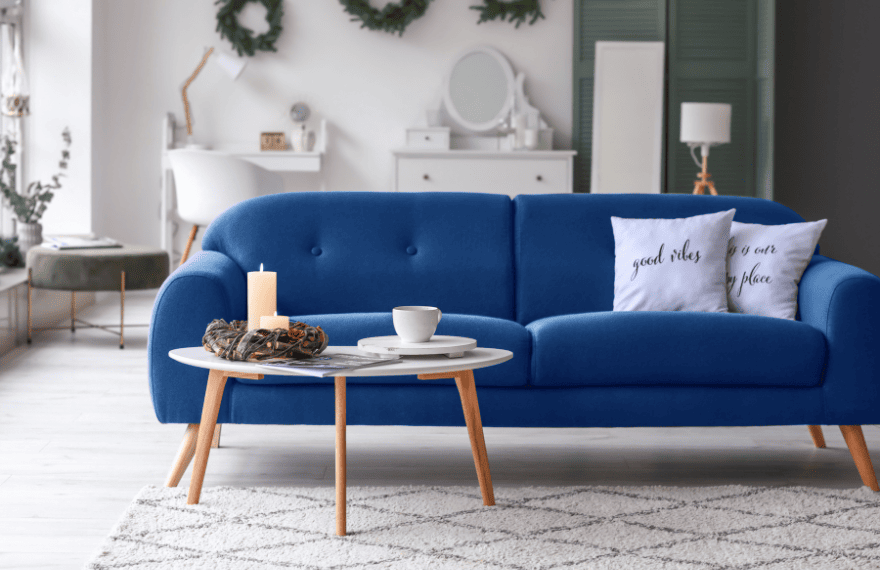
Seasonal and holiday interior design is all about transforming a space to reflect the spirit of a particular time of year. From Christmas decorations to summer makeovers, this niche is ever-changing and can be quite fun.
It’s a topic that offers endless creative possibilities and allows for a lot of DIY projects, which are often popular among readers.
Inspire seasonal joy with topics like:
- How to transition your home from summer to fall
- DIY Christmas decoration ideas
- The psychology of seasonal interior design
- Design tips for a festive yet sophisticated holiday interior
- Cultural traditions in holiday interior design
Outdoor spaces and patios
The exterior of a home offers a wealth of design possibilities, from gardens and patios to outdoor kitchens and fire pits. The challenge lies in making outdoor spaces both beautiful and functional, regardless of size or climate.
Because this area of design also involves landscaping and possibly even construction, it could attract a broad readership from DIYers to professional designers.
Explore the great outdoors with topics like:
- Designing small balconies and patios
- The best plants for your outdoor space
- How to create an outdoor kitchen
- Outdoor design for different climates
- Sustainable outdoor design tips
Color theory in interior design
Colors can drastically affect our mood and perception of a space. Understanding color theory can be critical for successful interior design, making it a fascinating niche to explore.
From trending colors to the psychology behind color choices, this area offers a wealth of material to delve into.
Add some color to your blog with topics such as:
- The psychology behind color choices in interior design
- How to choose a color palette for your home
- The impact of natural light on interior colors
- How to use color to make spaces look larger or cozier
- Trends in color for the coming year
Historical interiors
Delve into the past by exploring interiors from different historical periods. Whether it’s a Victorian parlor or a 1960s mod living room, historical designs offer a unique lens through which to understand both design and culture.
This niche could attract history buffs, film set designers, or anyone interested in period-specific decor.
Engage your audience with historical tales and topics such as:
- How historical events influenced interior design
- Recreating historical styles in modern homes
- The evolution of specific furniture pieces over time
- Conservation and restoration of historical interiors
- Period accuracy vs. inspired designs: Finding a balance
Interior photography
Capturing interiors through a lens is an art in itself. It’s not just about the space but also about how it’s portrayed. From lighting to framing, interior photography can make or break a design when showcased online or in magazines.
This could be an especially useful niche for bloggers who want to work with real estate agents, interior designers, or home stagers.
Focus your lens on topics like:
- Basic tips for aspiring interior photographers
- How to use natural light in interior photography
- Post-processing techniques for interior photos
- The role of styling in interior photography
- The business side of interior photography
DIY and upcycling
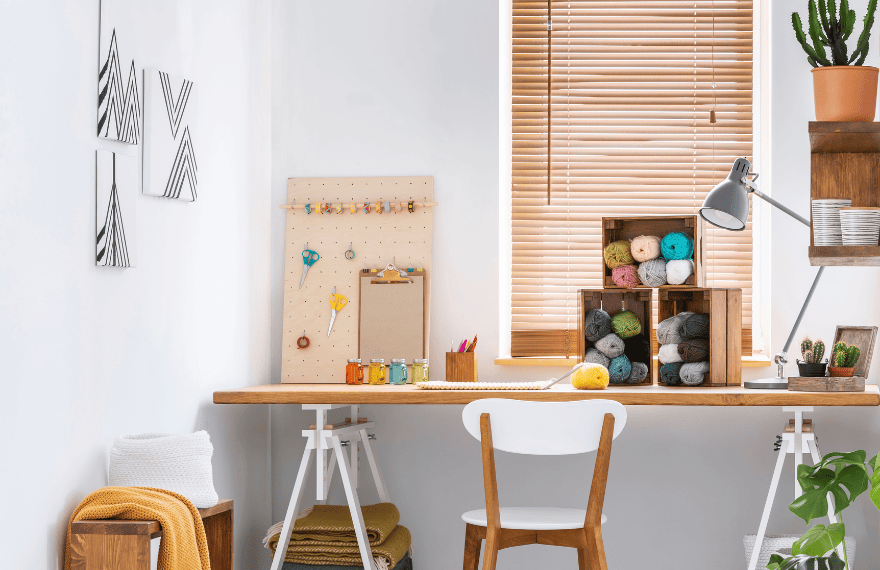
Do-it-yourself (DIY) projects and upcycling are not just budget-friendly; they’re also sustainable and creative ways to personalize a space. DIY is a popular niche because it offers hands-on, practical advice and can be highly rewarding.
Whether you’re interested in simple decor tweaks or more complex building projects, the DIY route provides a treasure trove of content possibilities.
For hands-on bloggers, topics can be as varied as:
- Simple weekend DIY projects for beginners
- How to source and select materials for upcycling
- Step-by-step guides for popular DIY interior design projects
- The benefits of upcycling vs. buying new
- Safety tips for DIY home improvement projects
Each of these niches presents an opportunity to delve deep into subjects that can benefit both your readers and yourself. Choose one or several that speak to you and happy blogging!
Conclusion
In the vast world of interior design, there’s no shortage of directions you can take to carve out a unique niche for your blog. From the functionality-focused world of adaptive design to the eco-conscious realm of sustainability, there’s a little something for everyone.
The real beauty lies in the breadth of subjects and audiences you can explore and engage with.
The niches we’ve discussed are far from exhaustive but offer a comprehensive starting point for any aspiring or seasoned interior design blogger. If you’ve been pondering which area to specialize in, or even if you’re just looking to diversify your existing content, these niches provide fertile ground for originality, creativity, and deep-dive analysis.
Plus, focusing on a particular niche can help establish you as an authority on the subject, increasing both your reach and credibility.
What’s most exciting is how each niche reflects broader shifts in culture, technology, and individual lifestyle choices. Whether you opt to delve into historical interiors, dissect the latest tech for smart homes, or focus on DIY projects, you’re doing more than just discussing decor; you’re tapping into how we choose to live our lives in the spaces we call home.
Remember, the most compelling blogs are not just informative but also passionate. Choose a niche that genuinely excites you, because that enthusiasm will naturally translate into your writing and engage your readers.
So, go ahead—pick a niche, or even a handful of them, and start creating valuable, engaging content that resonates. Your unique perspective is something the world wants to see!
